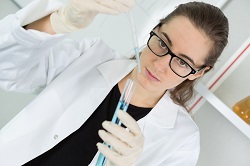Equipping biologists for the Big Data revolution
The DEVCOM project has trained a group of young scientists in both developmental and computational biology. Developmental biology looks at how cells grow from a single cell fertilised egg into full organism, and how they differentiate into specialised cells (like skin or eye cells for example). ‘The amount of data collected is exploding across every field of science,’ explains project coordinator Dr Gert Jan Veenstra, Professor of Molecular Developmental Biology at Radboud University in The Netherlands. ‘The sheer volume and range of data enables us to track and identify things that would not be possible with just a few measurements.’ Age of Big Data Applying Big Data to developmental biology means that a more holistic examination of cell behaviour can be achieved, rather than being constricted to focusing on one molecule at a time. High tech innovations like sequencing technology have also enabled genome-wide analysis of cellular behaviour. The challenge however is that the data collected cannot simply be analysed on a spreadsheet. One needs to be at ease with scripting, command-line tools and machine learning to analyse the data. Therefore, biologists must have the computational knowledge and expertise to make full use of such tools. ‘There are simply millions of data points here, and this presents a problem for developmental biology,’ says Veenstra. ‘The data needed to run all the measurements we want to are too big to be run on a laptop, so you need complete IT infrastructure and expertise in computational biology.’ Skills for the future This is where the DEVCOM project comes in. Thanks to EU funding, a training programme for 12 PhD students and two experienced researchers, at eight partner institutions across five countries, was developed. Each tailored plan involved meetings, networking opportunities and workshops. Trainees acquired technical expertise in embryonic anatomy and development, genomic profiling and sequence conservation as well as mass spectrometry, informatics and computational modelling. ‘The training programme involved bringing computational and developmental biology together,’ says Veenstra. ‘These workshops were not only interdisciplinary but also intersectoral, introducing young scientists to entrepreneurship and the business world.’ In additional to tailored training plans, each scientist was given a specific research objective. ‘From our perspective, the most important thing was the training that these objectives provided,’ says Veenstra. Nonetheless certain breakthroughs were achieved. One researcher, for example, successfully identified a key mechanism that is active during cell differentiation, and which has puzzled scientists for years. ‘Computational aspects were key to solving this puzzle,’ says Veenstra. ‘Bringing computational and life science skills together really benefits researchers. It allows researchers to design better experiments themselves and get much more out their own analyses. It’s about achieving a better overall understanding of what can be achieved.’ Veenstra believes that the four-year DEVCOM project, which was completed at the end of August 2017, has shown the value of forming interdisciplinary skill networks. Equipping biologists to harness the power of Big Data is a valuable investment in the future, as it will help put Europe at the forefront of genomic research, and hopefully lead to new regenerative medical therapies, perhaps capable of producing replacement cells and tissues. ‘The key lesson I’ve learned is that while it can be hard work bringing diverse fields together, it is worth doing,’ says Veenstra. ‘You get far more out of this than you put in.’







